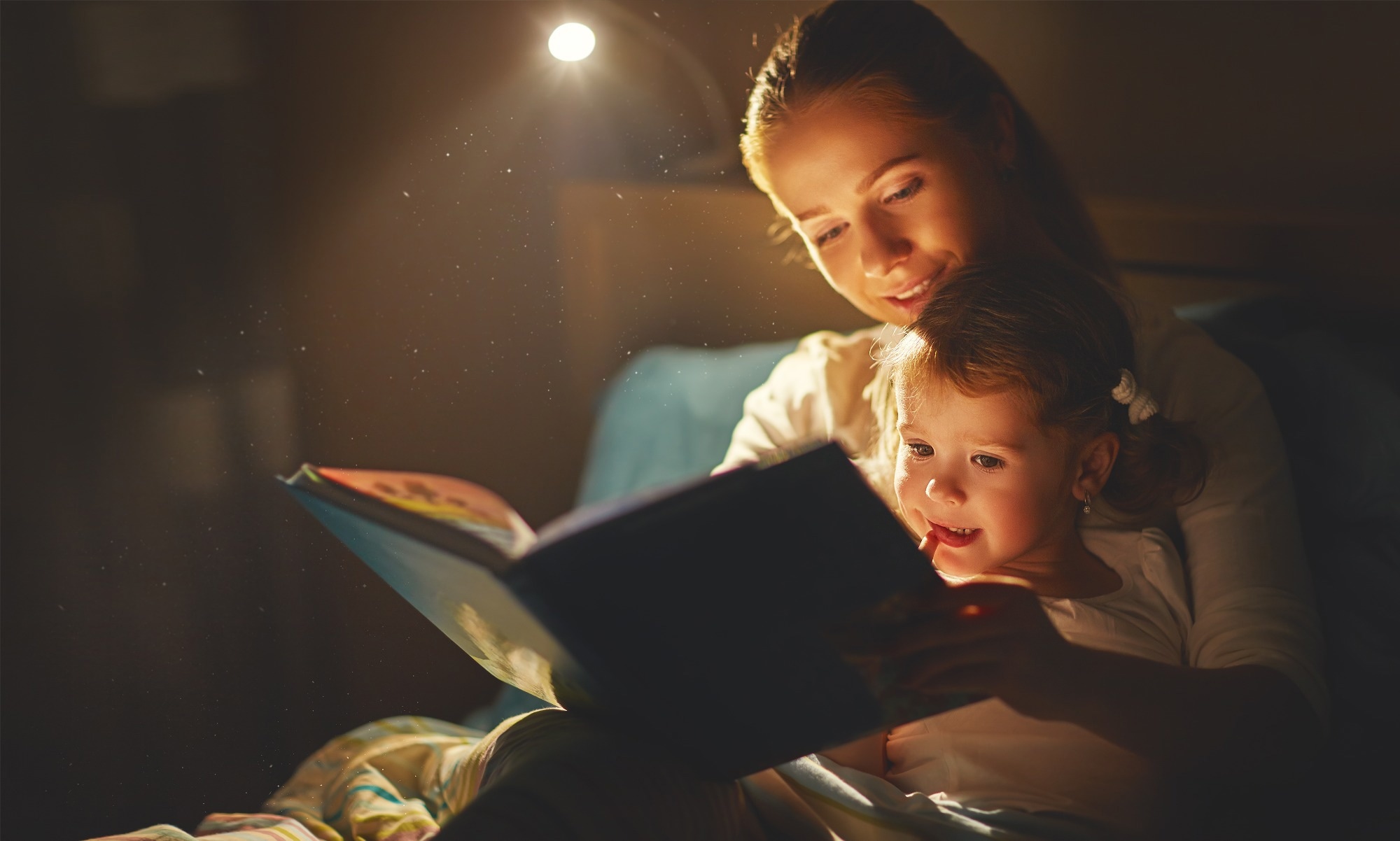A recent Scientific Reports study determined the presence of shared neural fingerprints between parents and their children while listening to stories.
 Study: Parent–child couples display shared neural fingerprints while listening to stories. Image Credit: Evgeny Atamanenko/Shutterstock.com
Study: Parent–child couples display shared neural fingerprints while listening to stories. Image Credit: Evgeny Atamanenko/Shutterstock.com
Background
A parent or caregiver is the most important person for a child. Parent–child interaction plays an important role in the well-being of the child, particularly in the development of the child’s cognitive capacity.
Behavioral and neuroimaging studies have demonstrated that parent-child interactions help shape the executive functions system of the child along with their limbic capacity.
Furthermore, parental emotional regulation determines the child's emotional features, which are associated with their neural systems.
A previous neurobiological model for parent–child interaction indicated that a parent tunes the child’s brain activity towards the execution of high-level cognitive and social processes.
Hyper scanning methods have been developed to better understand the neurobiological determinants of parent–child interaction.
These methods help synchronize a parent-child couple's brain activity during their interaction, enabling researchers to understand the shared neurobiological activity better.
Hyperscanning data of parent-children couples exhibited more emotional synchronization; for instance, comparable resting-state neuronal connectivity profiles were observed between them while watching an emotional movie.
In another study, the scanner images displayed a similar neuronal activity between mothers and teenagers, i.e., when the mothers witnessed their teenagers performing a difficult task.
Besides hyperscanning methods, the Connectome-based Prediction Model (CPM) is another approach designed to understand the within-group variability in the brain-behavior relationship.
This method can reliably predict the cognitive abilities of a child. A limited number of studies have shown the connectome fingerprinting (FC) approach's effectiveness in differentiating individuals based on brain connectivity patterns.
About the study
This study hypothesized that biological parent–child couples exhibit similar and unique functional connectivity patterns, particularly those linked with emotional and executive functions systems.
Therefore, brain connectivity profiles acquired in a story-listening task could be used to identify parent–child couples.
A diffusion map (DM) framework, which is a non-linear dimension reduction technique, was used to establish meaningful functional connectivity similarities between a parent and their child.
A total of thirteen Hebrew-speaking children, between 8 and 12 years of age, were recruited along with one of their biological parents.
The mean age of the parents was 42.4 years. All recruited parent-children couples were Caucasian and belonged to a relatively well-off socioeconomic background.
None of the participants had a history of neurological or developmental disorders. They underwent two separate computational neuroimaging scans with a maximal interval of one month between the two scans.
It must be noted that the participants were asked to listen to stories that were being played during magnetic resonance imaging (MRI). Furthermore, behavioral assessments were also conducted in both sessions.
Study findings
The functional MRI data indicated the presence of shared neural determinants between biological parent–child dyads.
Importantly, similar intra-brain connectivity profiles were recorded during story listening to that could be used to identify biological parent–child couples.
Consistent with the results of previous studies, the current study demonstrated an increased brain-to-brain synchronization among individuals with similar characteristics.
This study also reflected the existence of brain activation similarities while listening to stories among socially connected people. The highest number of parent–child FC similarities was observed within the DMN- frontoparietal (FP) node.
Previous studies have shown that the gestalt cortex is associated with generating subjective perspectives. The brain similarities in FC could be due to shared perceptions that are evident through the interpretation of stories.
In a positive neural fingerprint, the higher involvement of salience-memory and cerebellum-cerebellum nodes were observed. This finding implies that biological parents and children use similar cognitive and sensory brain networks that support cognitive monitoring and processing while listening to stories.
This study postulated that, during listening comprehension, the parental cerebellum plays a crucial role in tuning the child’s language processing.
In addition, similar neuronal engagements occur between parent-child couples while retrieving information from memory to support comprehension of stories.
This study used two Cognitive-Based Integrative (CBI) sub-models, which indicated that biological parent–child couples share FC similarities and differences.
These could be used as an fMRI-based neural fingerprint. Future studies must focus on the extent of genetic and environmental factors influencing connectome similarity.
Conclusions
The current study highlighted the presence of distinct functional correlates associated with both cognitive and sensory networks, which are shared between biological parent–child couples while listening to stories.
It also documented supporting evidence that entails using neural fingerprints to identify biological parent–child relations.